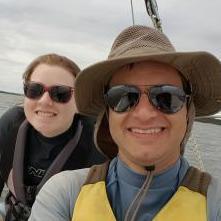-
Posts
206 -
Joined
-
Last visited
Content Type
Profiles
Forums
Articles
Gallery
Downloads
Events
Posts posted by EricJergensen
-
-
<script type="text/javascript"> // 

wagon wheel rims - pretty sure they're wrought iron
in Blacksmithing, General Discussion
Posted
In the industrial sense, wrought iron can't do anything steel cannot. It is a decidedly inferior material and that is why it is no longer produced. Iron (wrought or otherwise) has a significantly lower strength / weight ratio than steel. Even its weathering properties are hugely outclassed by modern alloys and finishes.
From an artistic sense, the texture - especially of low-grade wrought - can be very interesting.
Historically, it's significance is huge: if you smith for history, it's The Thing. If you want to connect with historical work, there really is no substitute. It's a challenge. It's softer. It's more forgiving and finickier. It explains many habits and best practices (part of the whole Square->Octagonal->Round has to do with how slag inclusions in wrought lead to splitting).